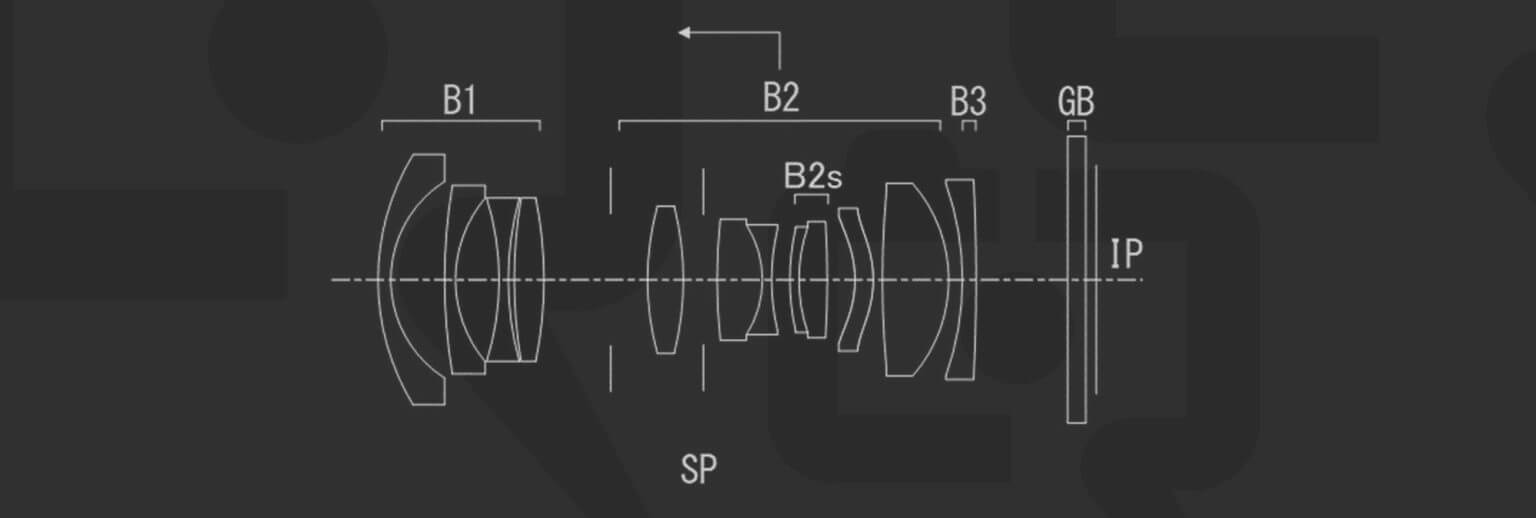In this patent application (2023-130885), Canon lists quite a few primes with a significant ingress, but also more notably a smaller image circle than what would normally be used for APS-C. For Canon APS-C, that’s 13.66mm, whereas all these lenses have 12.50mm. Super-35 just in case anyone is thinking that is around 14.2mm so they are not for that application either. This means that to fill the entire APS-C frame, the image would have been stretched to fill the frame, thus leading to a loss of resolution. However, the usual benefits are a smaller lens and also cheaper costs to manufacture the lens.
Usually, I would ignore this patent application out of principle, but here we are. To be fair, these are nice, fairly small ultra-wide APS-C lenses, so I’d buy them in a heartbeat and ignore everything that I just wrote. Economics and practicality do win out occasionally.
When reading these particulars, take into account that the lens length is to the sensor plane, so that includes the 20mm flange distance of the RF mount (as an example), so the physical lens length is 20mm shorter.
These lenses do have a short back focus distance, but it’s still in the realm of possibility.
I’m of the mindset that with focal lengths from 9mm to 30mm, Canon should simply make them all.
Canon APS-C 13mm F2.0
Focal length 13.40 F number 2.06 Half angle of view (°) 43.01 Image height 12.50 Lens Total length 77.83 Back focus 12.43
Canon APS-C 11mm F2.0
Focal length 11.30 F number 2.06 Half angle of view (°) 47.89 Image height 12.50 Lens total length 77.85 Back focus 12.44
Canon APS-C 22mm F2.0
Focal length 22.00 F number 2.06 Half angle of view (°) 29.60 Image height 12.50 Lens total length 72.85 Back focus 12.44
Canon APS-C 30mm F2.0
Focal length 30.52 F number 2.06 Half angle of view (°) 22.27 Image height 12.50 Lens total length 75.88 Back focus 14.49
Canon APS-C 9mm F2.0
Focal length 9.00 F number 2.06 Half angle of view (°) 54.25 Image height 12.50 Lens total length 79.30 Back focus 12.43
As with all patent applications, this application may not lead to an actual patent or actual products – but it does allow us to see what Canon was researching and thought relevant enough to attempt to patent it.
Source: Japan Patent Application 2023-130885
|
When you purchase through links on our site, we may earn an affiliate commission. Here's how it works. |


Bring them out, shut the haters up. Canon STONKS.
I hope I am wrong.
OTOH, f/2 prime is much smaller and delivers much more light on the sensor.
And sometimes that is really needed.
I did realize that those are included!
And because of this, I wrote my comment.
The EF-M 22/2 is highly considered. So getting an RF-S version is almost a no-brainer to me.
And this is representing the typical FF equivalent of a 35mm lens.
But for people loving primes, something wider would be cool to add as a really nice prime setup.
Or what do you think?
On a serious note, the R8 is quite nice. It's the same price as the R7, and although the controls are not as good (the lens control ring or using Fv mode mitigates a lot of that), the R8 performance is overall better (battery life notwithstanding).
I would have preferred something in the size of the R50, or even R50 without a viewfinder.
[sarcasm alert]
But I won't say anything about my expectation on price ;) :(
So IMO you'll only have to worry IF and WHICH of these lenses will become a real product.
But the patent is as it is and it shows a 22/2 formula.
I don't know, if the flange distance was the reason that EF-M15-45 turned into RF-S18-45.
Maybe there were other reasons that made Canon decide to make it start at 18mm.